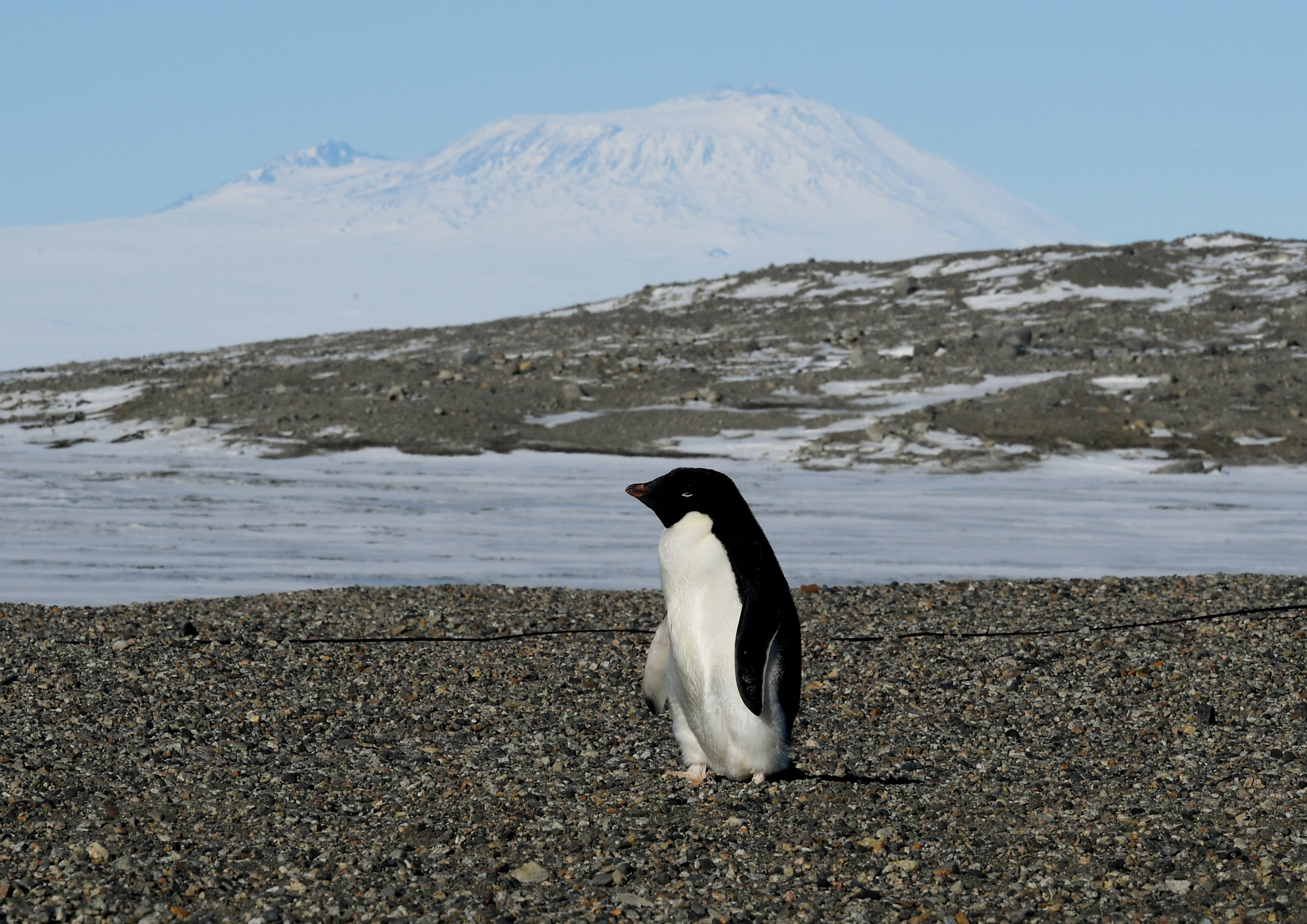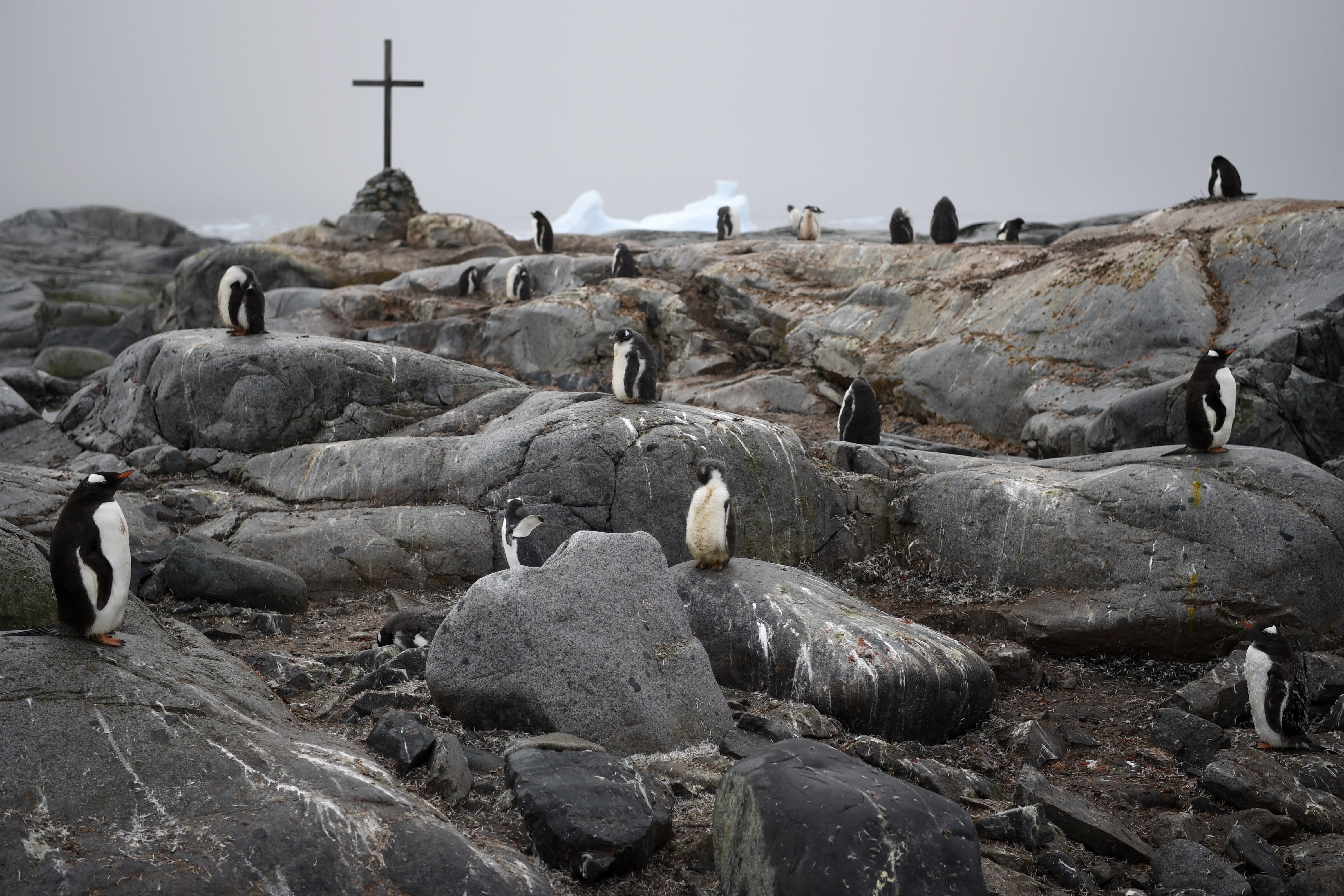There is no shortage of penguin poop in Antarctica. In fact, you can see it from space, if you know where to look. Researchers often use satellite observations to study Adélie penguin populations and changes in their diet.
The most widespread penguin species, there are currently an estimated 10 million Adélie penguins, according to the International Fund for Animal Welfare.
The penguins themselves are too small to see from above, but their excrement is not. Also known as guano, the old bird poop builds up on rocky and icy surfaces over time. It can be seen in shades of white, red, and pink. The color that is expelled depends on what these flightless birds eat. With a krill diet, for example, turns it out pinker. Whereas, a largely fishy diet turns their poop whiter.
But, the color isn’t the only magic associated with Adélie penguin poop.
Researchers say that ammonia released from the guano could help to protect them from the increasingly dangerous effects of human-caused climate change. The sea ice Adélie penguins rely on to survive is dwindling, as it is increasingly threatened by climate change. However, ammonia released from their poop may be contributing to increased regional cloud formation that halts ice loss and protects their habitat.
“There are connections between things that happen on our natural planet that we just don’t necessarily expect,” Matthew Boyer, an atmospheric scientist at the University of Helsinki, told The Washington Post. “And this is one of them.”

Boyer was the lead author of the related research, which was recently published in the journal Communications Earth & Environment.
Ammonia, which is a naturally occurring chemical compound often used in disinfecting products, can ramp up cloud formation when it chemically interacts with gases that contain the smelly element sulphur. This reaction increases the creation of particles in the air that give water vapor — water in its gaseous form — a surface to condense upon: changing it into a liquid. That’s how clouds are formed. Ammonia clouds have been found on Jupiter, and over Southeast Asia.
The resulting clouds can serve as insulating layers in the atmosphere, as well as help to reduce surface temperatures and keep the surrounding sea ice from melting.
Last year, the sea ice extent in the Southern Ocean around Antarctica was the second smallest on record. This March saw Antarctic sea ice plunge, as well. The sea ice, which is more reflective than water, plays a significant role in keeping polar regions cool.
“We can hypothesize that there will be a cooling effect from the clouds because, in general, that is the most prominent effect of clouds in the atmosphere,” Boyer explained.
To reach their conclusions, Boyer and his colleagues measured the concentration of ammonia in the air at a site near Marambio Base in the winter of 2023. They were downwind of the colony of 60,000 Adélie penguins, and their poop. When the wind blew from that direction, they found the concentration of ammonia in the air increased to more than 1,000 times higher than the baseline level. Furthermore, it was still more than 100 times higher than the baseline after the penguins had migrated from the area by the end of February.

To confirm that this was the direct result of the guano’s ammonia, they took several additional atmospheric measurements on a single day, finding that the number and size of particles at the site sharply increased when the wind blew from the colony. Just three hours later, they observed a period of fog that they say was likely the result of the increased particles.
Although the specific interaction between penguins and the Antarctic climate is currently poorly understood, Antarctic ecosystems are facing significant pressures because of human-driven climate change that is driving sea ice loss as global warming continues. Warmer waters may mean less of the phytoplankton that krill and fish eat, reducing the penguins’ food supply.
The researchers say that their conclusions emphasize the importance of protecting penguins, which play a vital role in balancing their ecosystems. Although these birds may only be just over two feet tall, their contribution may be massive.
“The oceans and the penguins are influencing the atmosphere and actually influencing the local climate in Antarctica,” said Boyer. “The local changes in Antarctica will have an impact on global climate.”



